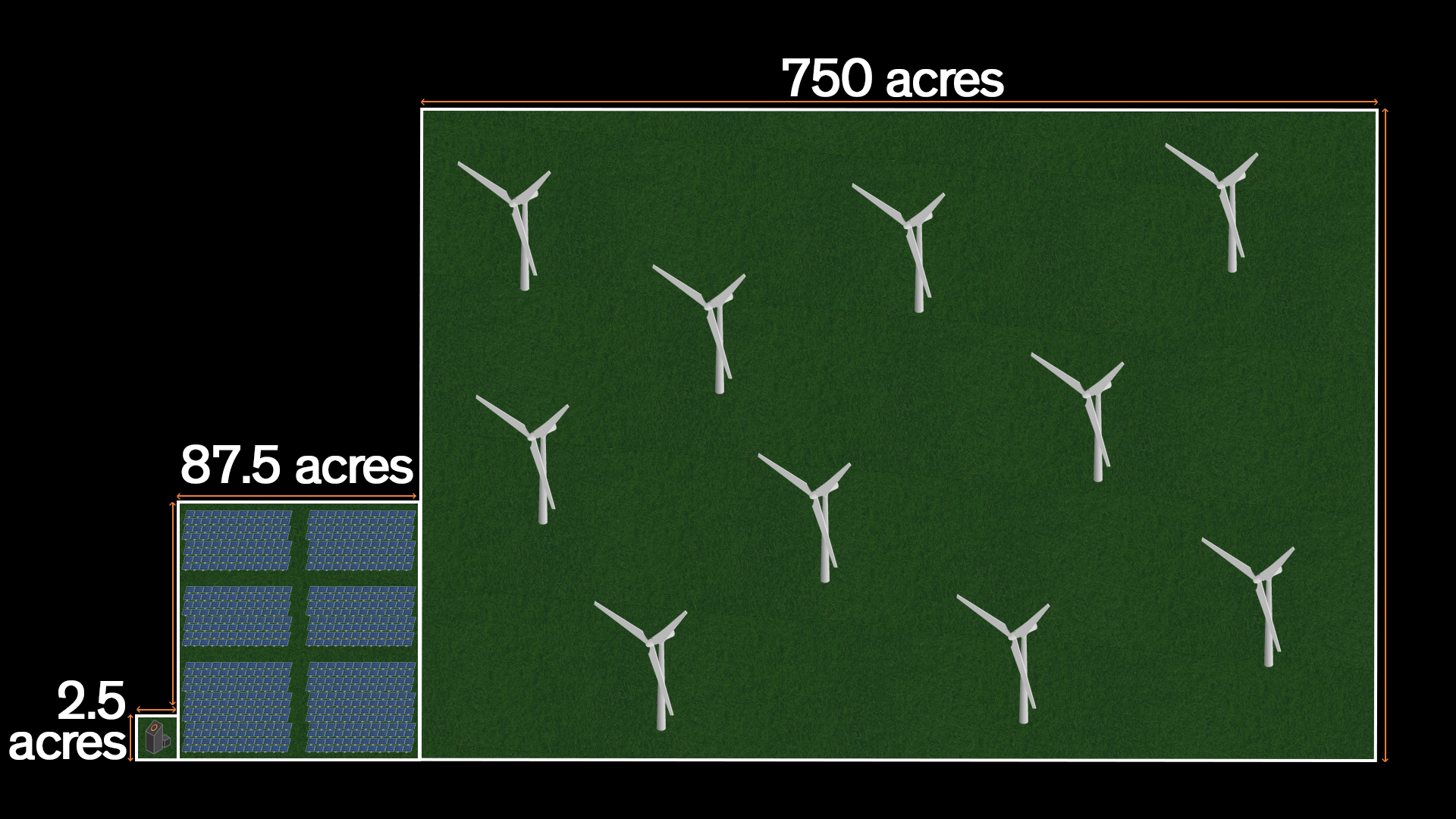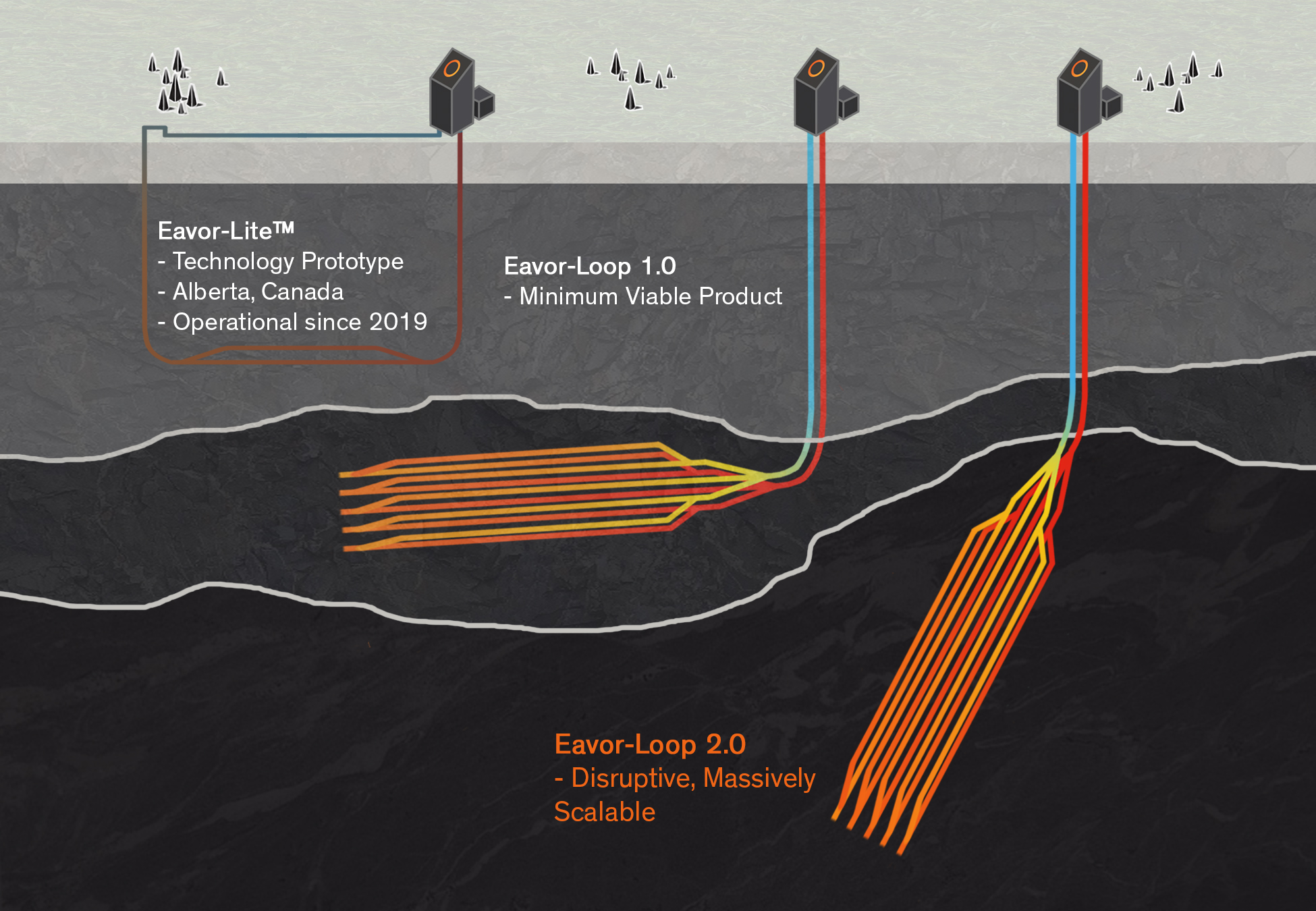Geothermal energy is thermal energy generated by and/or stored in the Earth. It originates from:
1) Heat from the original formation of the planet
2) Radioactive decay of minerals
3) The Sun (stored in shallow soil as the earth heats during the day and cools at night)
Traditional geothermal energy is considered a cost-effective, reliable, sustainable, and environmentally friendly way to generate and distribute heat and electricity but has historically been limited to only certain areas (~9% of land surface) where certain requirements are met (based on the requirements of currently deployed technology).
To be considered competitive with other renewable resources (wind, solar, hydro, etc.), the geothermal industry must find a way to be more broadly available (“Geothermal Anywhere”).
The first difference amongst renewable energy sources is “intermittent vs continuous” – sources that rely on the wind and the sun fall in the intermittent category (adding energy storage minimizes this, but increases cost, land use, and risk).
Hydroelectric, biomass, geothermal fall into the “continuous” category. This difference is important from a reliability point-of-view (can you guarantee to deliver energy to your customer, even during an extended cloudy, smokey, or windless period?), and an investment point-of- view (intermittency means there are extended periods of time when the hardware you paid for is idle – not making money).
Another metric of difference is baseload vs. dispatchability (running continuously while providing one level of power (baseload) vs. the ability to ramp up and down as needs change (dispatchability)). Being “dispatch-capable” is a distinct advantage in our ubiquitous heterogenous power production market – a technology that can rapidly ramp up and down as demand varies and other sources change their output is uniquely valuable to grid operators. Certain forms of hydroelectric, biomass, and geothermal are “dispatch-capable.” Geothermal is unique in that most of it’s infrastructure is underground – it can be paired with a large-scale surface intermittent energy source and use it’s dispatchability to fill in the gaps while sharing the infrastructure. Perhaps the strongest differentiating factor amongst renewable energy sources is flexibility of output.
Most renewable energy sources are focused on only making electricity, but what if the real need of the customer is heating or cooling? They may consume electricity to create that heating or cooling, but there is waste and efficiency loss in doing that. Some renewable energy sources are heat-based – geothermal, concentrated solar, burning biomass, and nuclear. Providing heating/cooling directly to the customer (or being able to provide both electricity and heating/cooling in varying degrees as demands change) can avoid that waste and inefficiencies. Direct-heat is nearly 100% efficient; direct cooling about 75%; conversion to electricity <<50%.
Who needs large-scale heating and cooling? This figure tells the tale:

The high-level answer is “sometimes yes” and “mostly no.” “Infrastructure” is a broad term encompassing, at a minimum, wells, pipelines, leases, permits, and rights-of-way. Repurposing of wells is problematic – when they are ready for repurposing, they are generally at, near, or past their designed lifetime, and will require a careful analysis of each well for structural integrity. The other challenge with wells is their well-bottom diameter – commonly drilled diameters for the bottom of oil and gas wells are too narrow for the water flow rates required by geothermal.
The integrity challenge and the diameter challenge mean few wells will get re-purposed. That doesn’t mean they aren’t useful, however – the geological and geophysical data gathered from those wells is a huge savings for the exploration plan for geothermal wells! Similarly, late-in-lifetime pipelines face the integrity problem but also face a corrosion challenge – geothermal fluids tend to be more corrosive than oil and gas.
Surprisingly, the most easily reused “infrastructure” is leases, permits, and rights-of-way, but in many jurisdictions, oil and gas operations have different regulations and/or are handled by different regulatory agencies, making the transfer of such assets less than transparent.
Globally, an enormous storehouse of information & capability has been built up in the oil and gas sector over the last 100 years. One of the remarkable advantages that geothermal industry has over other renewable energy sources is that much of that storehouse can be used to rapidly accelerate the application and growth of the geothermal industry.
While the evolving energy transition to fight climate change will mean an eventual reduction in the size of the oil and gas workforce/industry, the similarity of the industries (safe subsurface exploration, drilling, large project management, reservoir modeling and management, and rights/permitting management) will allows retention and transfer of the knowledge and capabilities with little-to-no retraining.
Countries that have made the largest investments in oil and gas (Canada, USA, OPEC+ countries) have an advantage and stand to gain the most from a rapid translation to geothermal activities – with first movers gaining the most advantage.
No, and given that the Eavor-Loop™ system relies on a very gradual conduction-based cooling of the rock, there is a suggestion that the overall cooling makes the rock stronger, and thus less likely to break (=less earthquakes). Given that the Eavor-Loop™ is closed, there are no exchanges of potentially toxic or noxious fluids or gases between the Eavor-Loop™ and the rock, formations, or the atmosphere; nothing is affected beyond the gathering of heat.
By taking the closed-loop approach, a wholly new paradigm is created – many of the “challenges” identified as being associated with open-loop systems (e.g., earthquakes, fracking, pollution) are external environmental ones that impact stakeholders and the community; the challenges associated with closed-loop systems are mostly internal system-related ones (cost of drilling, long-term heat production stability, multilateral bore wall stability) and can be addressed by engineering solutions.
The Eavor-Loop™ differs from all other Geothermal types because it is a completely closed system, and there are no emissions of any kind. Traditional geothermal systems have at least one leg of the system open to the environment, and thus can produce emissions; this depends on the local geology underlying the project and the extent to which the project developer as installed systems to deal with those gases.
The closed-loop nature of the Eavor-Loop™ system means there are no exchange, extraction, or injection of fluids into/out of the rock reservoir. This means no induced seismicity and no uplift/subsidence. In fact, there are suggestions that the overall cooling makes the rock stronger, and thus less likely to break (=less earthquakes, to be further researched).
One big difference and advantage is that an Eavor-Loop™ provides a reliable and steady baseload and dispatchable/load following power source. Wind, Solar (with or without batteries) are intermittent (available only when the sun shines/wind blows). In fact, Eavor-Loops™ can easily be sited beneath wind/solar projects and can work in concert to provide the cheapest, safest, greenest, and most reliable solution for customers. Another difference is in land-use – Eavor-Loop™ also requires substantially less surface land to be used: 35x less than solar and 300x less than wind.
No effect on biodiversity is expected by implementing Eavor-Loop™, which has a minimal surface footprint (0.3% land use compared to wind, 2.9% compared to solar PV), at least no more anyway than a residential/industrial structure of the same size would. Open-loop geothermal often requires a cooling station that emits potentially harmful steam, but this plants style is becoming less common. With any style of geothermal, there are no large rotating structures (like wind turbine vanes) to create a dangerous ecological environment and no reflective surfaces (PV panels) or hot exposed surfaces (concentrated solar) to confuse and potentially harm avian species.
There are no safety concerns other than the standard OH and S requirements that exist globally when operating drilling rigs and industrial plants. The facilities are not run at high pressures. There are no toxic or volatile fluids or materials involved in the system (the working fluid is water). The facilities are primarily operated and controlled remotely, automatically, and/or autonomously. The “Derek Riddell Eavor-Lite™ Demonstration Facility near Rocky Mountain House, AB, Canada has been running autonomously without error since December, 2019.
When considering costs, the project’s complete life cycle should be considered: environmental costs, the value of “green,” end-of-life disposal, and the cost of distribution and transmission infrastructure should all be considered. With all costs considered, Eavor-Loop™, as well as other styles of geothermal systems, can be very cost-competitive, especially on a full life-cycle basis, in several markets globally, and thus not impact consumer energy pricing. Eavor’s primary goal through continuous learning and technological development is to bring the cost of the Eavor-Loop™ system down to be competitive in all markets.
The potential amount of energy varies by location and depends on geology, technology applied (EL 1.0 or EL 2.0), geothermal gradient, and scale, but in general, a single Eavor-Loop™ can supply:
● Electricity: 2,000 – 10,000 homes (average is ~7,000 homes)
● Heat: 12,000 – 20,000 homes (average is ~16,000 homes)
It is important to note that most Eavor-Loop™ projects will involve many loops, all drilled from the same surface location and penetrating different rocks. For electricity projects, typically there are 10 Eavor-Loops™ per surface location; heat projects will likely involve a minimum of ~3 Eavor-Loops™.
They should refer to that video or this graphic:


The First Truly Scalable Form
Of Clean Baseload Power
| Cookie | Duration | Description |
|---|---|---|
| cookielawinfo-checkbox-analytics | 11 months | This cookie is set by GDPR Cookie Consent plugin. The cookie is used to store the user consent for the cookies in the category "Analytics". |
| cookielawinfo-checkbox-functional | 11 months | The cookie is set by GDPR cookie consent to record the user consent for the cookies in the category "Functional". |
| cookielawinfo-checkbox-necessary | 11 months | This cookie is set by GDPR Cookie Consent plugin. The cookies is used to store the user consent for the cookies in the category "Necessary". |
| cookielawinfo-checkbox-others | 11 months | This cookie is set by GDPR Cookie Consent plugin. The cookie is used to store the user consent for the cookies in the category "Other. |
| cookielawinfo-checkbox-performance | 11 months | This cookie is set by GDPR Cookie Consent plugin. The cookie is used to store the user consent for the cookies in the category "Performance". |
| viewed_cookie_policy | 11 months | The cookie is set by the GDPR Cookie Consent plugin and is used to store whether or not user has consented to the use of cookies. It does not store any personal data. |